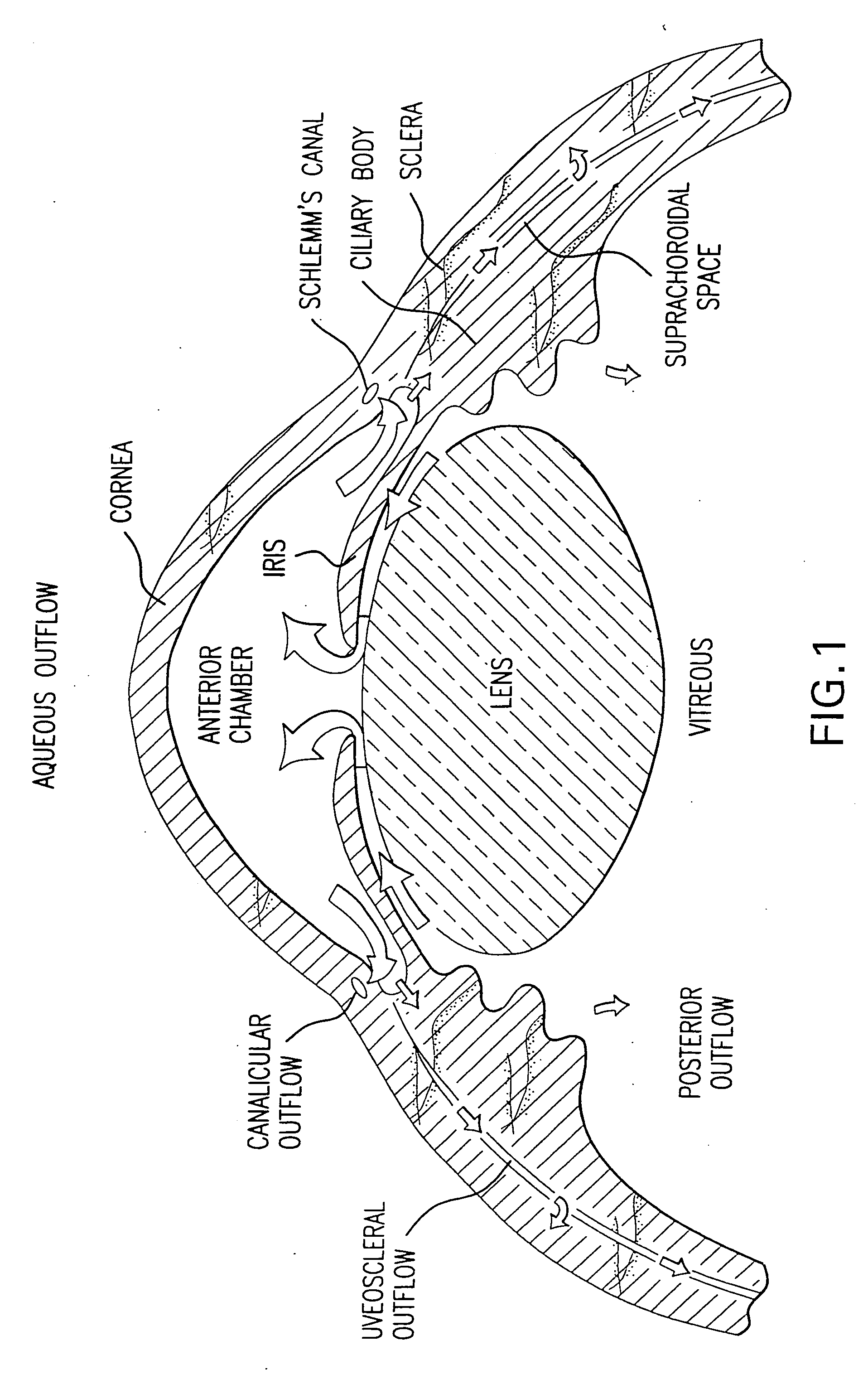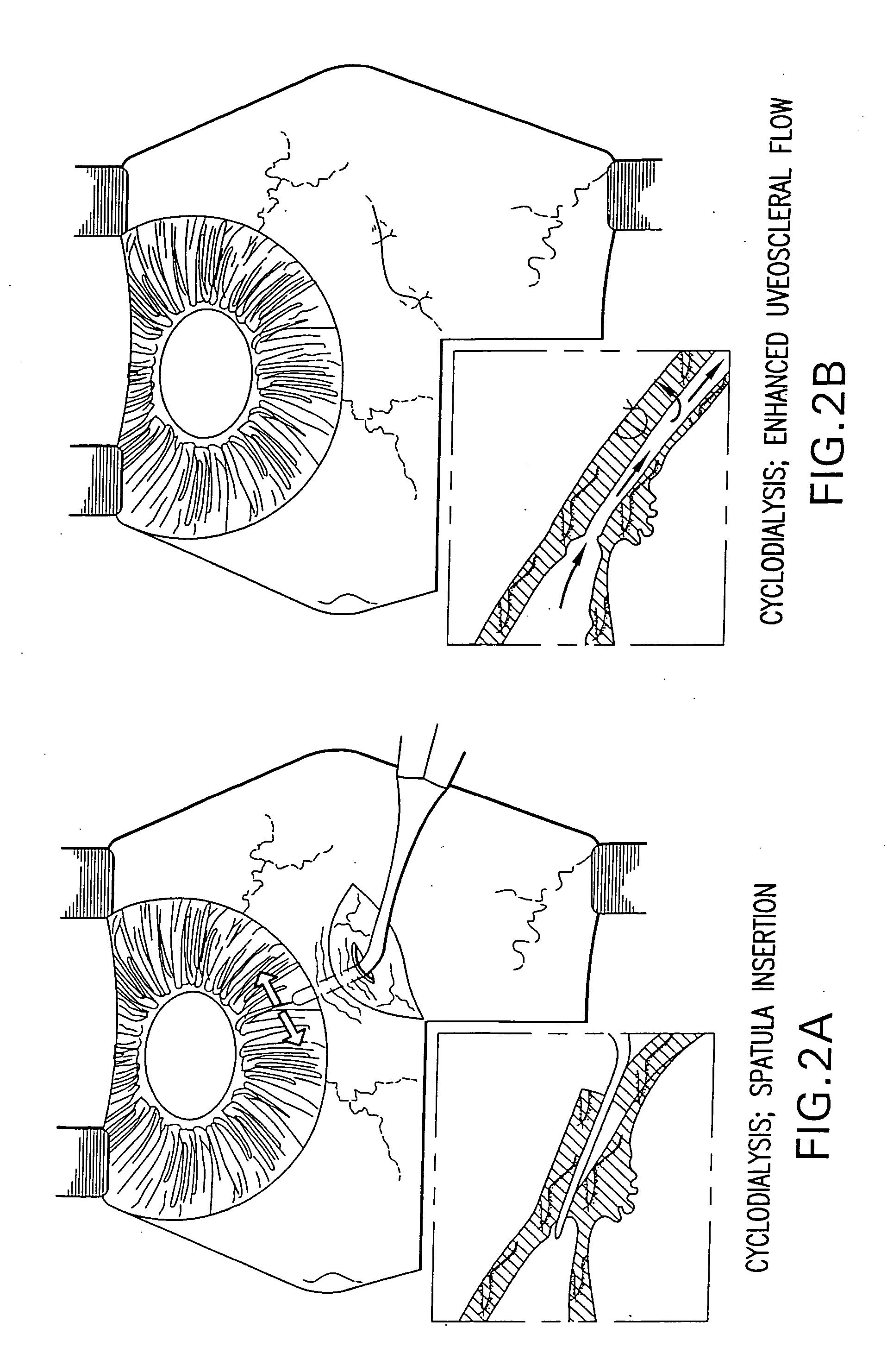Uveoscleral drainage device
a drainage device and uveoscleral technology, applied in the field of eye implants, can solve the problems of high complication rate, inability to administer glaucoma medication in many parts of the world, and inability to achieve the effect of reducing the intraocular pressure in the eye, reducing inflammation and further reducing visual acuity, and ensuring the effect of implanting
- Summary
- Abstract
- Description
- Claims
- Application Information
AI Technical Summary
Benefits of technology
Problems solved by technology
Method used
Image
Examples
Embodiment Construction
[0038] The present invention is more particularly described in the following examples that are intended as illustrative only since numerous modifications and variations therein will be apparent to those skilled in the art. Thus, the embodiments of this invention described and illustrated herein are not intended to be exhaustive or to limit the invention to the precise form disclosed. They are chosen to describe or to best explain the principles of the invention and its application and practical use to thereby enable others skilled in the art to best utilize the invention. As used in the specification and in the claims, “a,”“an,” and “the” can mean one or more, depending upon the context in which it is used. The preferred embodiment is now described with reference to the figures, in which like numbers indicate like parts throughout the figures and views.
[0039] Referring to FIGS. 3A-5D, examples of uveoscleral drainage devices of the present invention are shown. The implant or shunt ...
PUM
 Login to View More
Login to View More Abstract
Description
Claims
Application Information
 Login to View More
Login to View More - R&D
- Intellectual Property
- Life Sciences
- Materials
- Tech Scout
- Unparalleled Data Quality
- Higher Quality Content
- 60% Fewer Hallucinations
Browse by: Latest US Patents, China's latest patents, Technical Efficacy Thesaurus, Application Domain, Technology Topic, Popular Technical Reports.
© 2025 PatSnap. All rights reserved.Legal|Privacy policy|Modern Slavery Act Transparency Statement|Sitemap|About US| Contact US: help@patsnap.com



